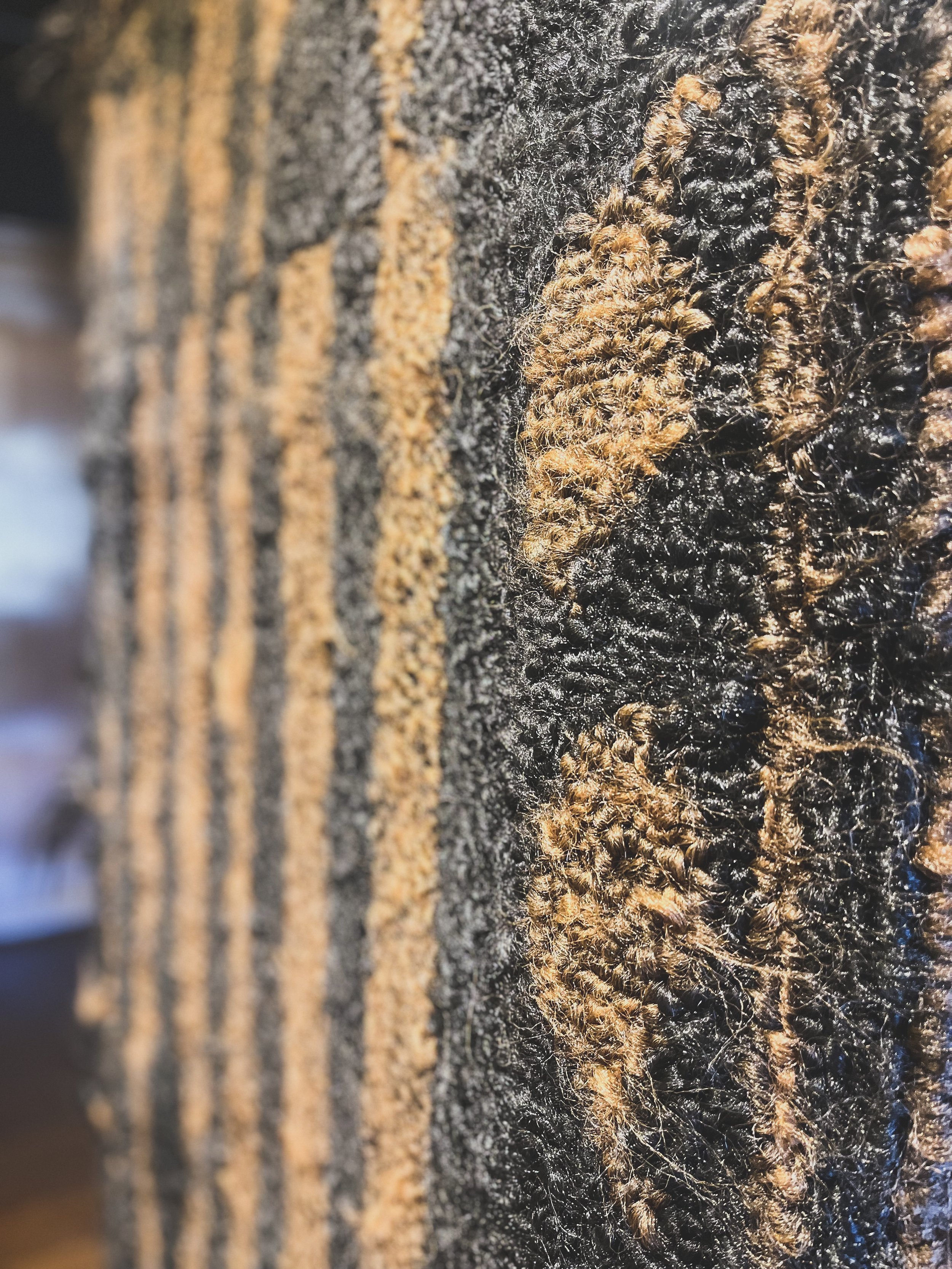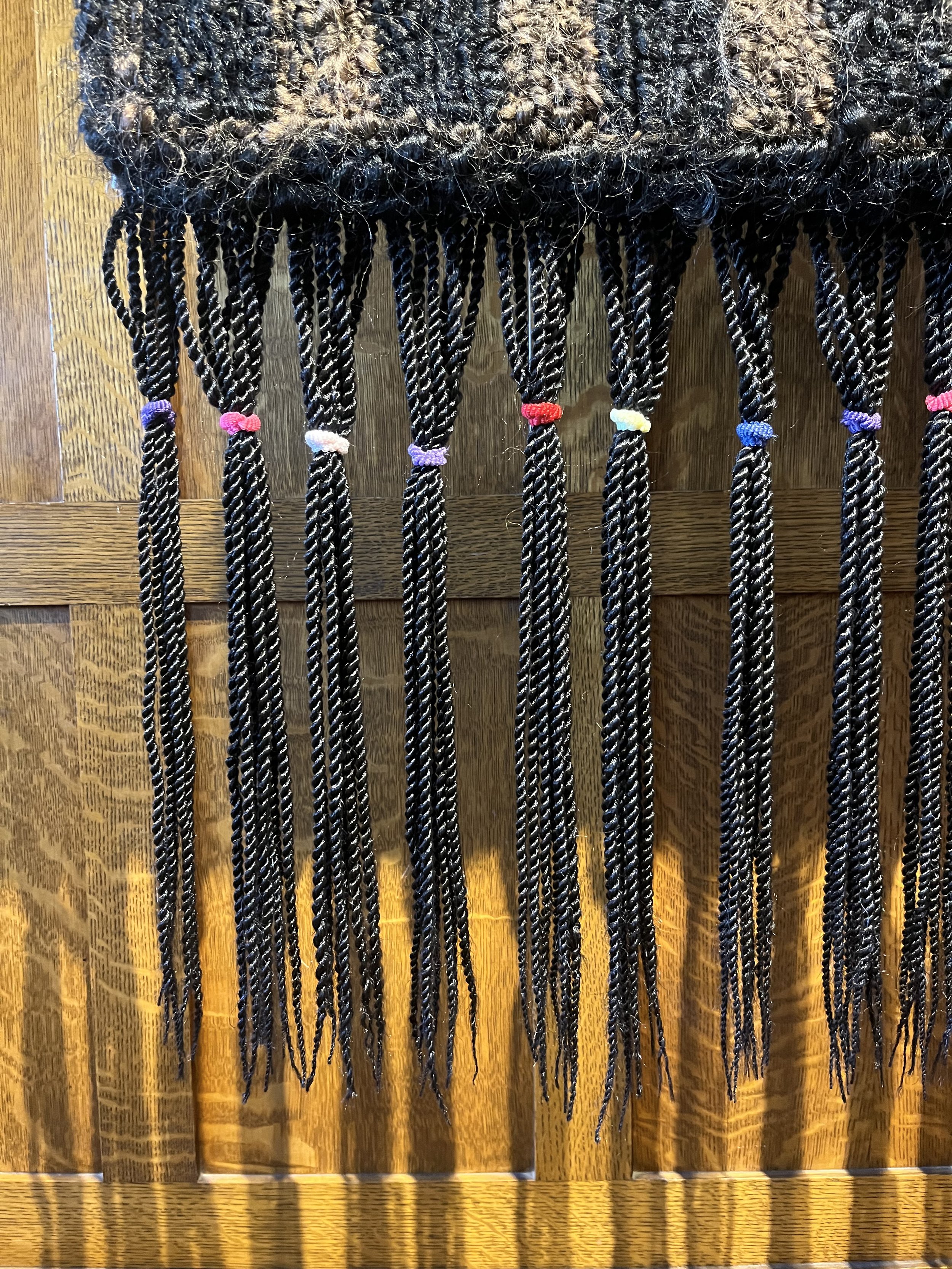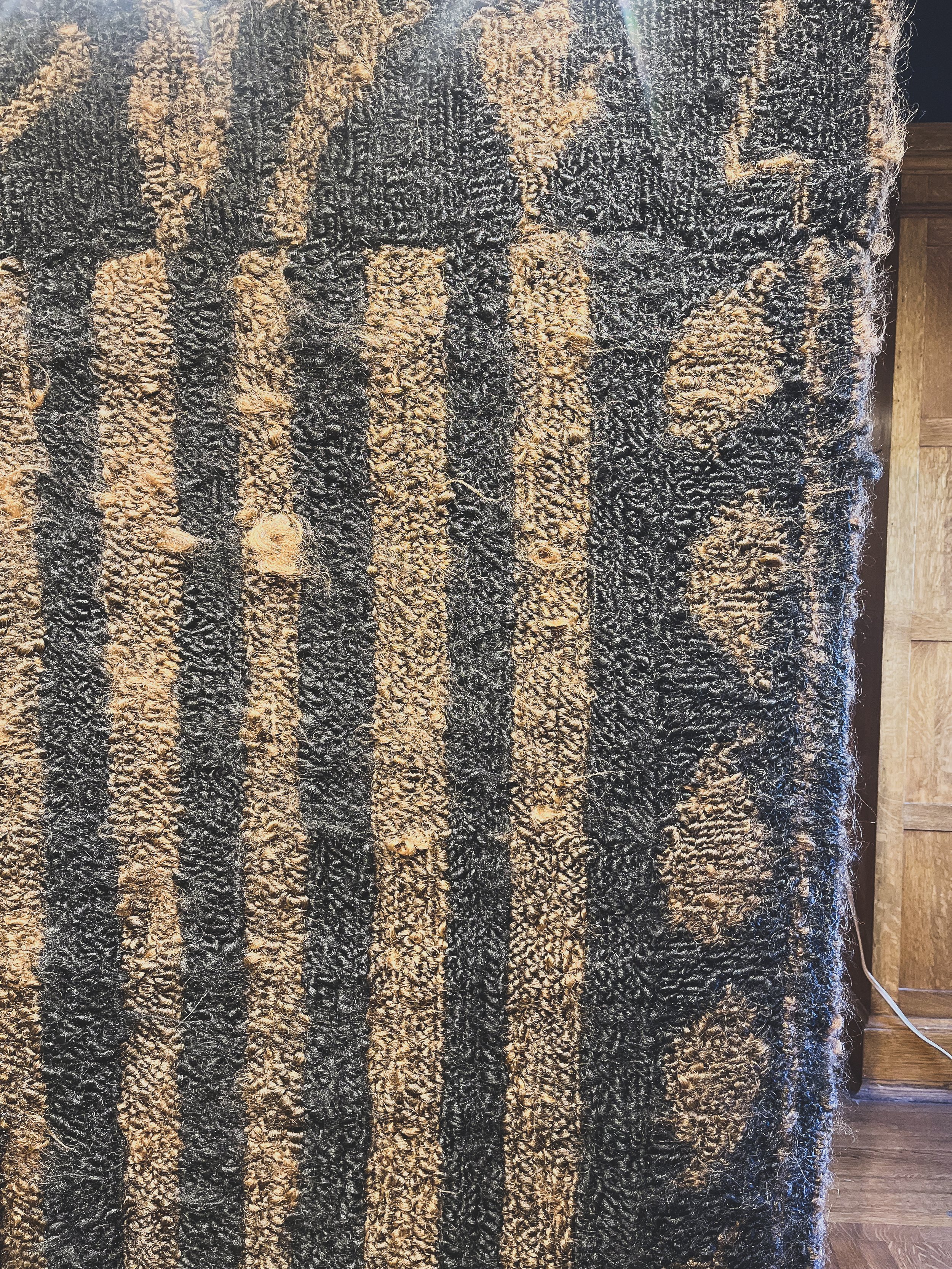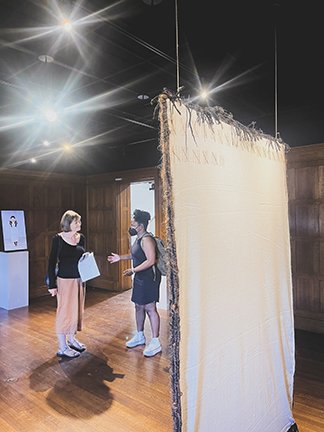Black Geographies: Remapping the Landscape
Works by
Quinn Hunter
"Art gives us the ability to layer beauty and immense pain."
The exhibition will be on display until September 30, 2022.
Location: Oak Room (201), Crabbe Hall
University of Northern Colorado
In her reflective works Quinn beautifully confronts black erasure--our tendency to step over or dismiss parts of our troubling past particularly in the way that we present and inhabit spaces. With her body of work "Black Geographies: Remapping The Landscape," Quinn challenges the romanticized, portrayal of the Antebellum South common in our culture. Movies like Gone with the Wind, depict it as a "pretty world of gallantry... of knights and their ladies... it is no more than a dream remembered." Although, the south was a dream for some, it was more of a nightmare for the black bodies exploited and broken for its opulence.
On a sugar plantation, the average lifespan of a slave was just 7 years making these grand homes more akin to an interment or concentration camp than a palace or glamorous destination. Yet, that is largely what these estates have become--desirable venues for elegant weddings or decadent getaways. Furthermore, many of these properties receive government aid for restoration and improvements because they have been designated "historic sites." So while plantation owners continue to profit from the grandeur built by slavery, they neither educate about it nor offer reparations for it--in some respects perpetuating the injustice they shy away from acknowledging.
Seeking to acknowledge the black experience in these spaces, Quinn recreates the luxury items present in them--specifically, designing rugs and tapestries that would fit into certain rooms within particular plantations. By weaving them out of black women's hair rather than traditional mediums, she physically reinserts black bodies back into these spaces. While some may find human hair grotesque, we usually create these goods using the hair from animals, livestock, and that's just what slaves were. Made by hand over many hours (the cross hatches on the back of the pieces tally the number of hours it took to complete the piece), they also draw attention to the labor of black bodies and the stifling of black expression. For many hair is an expression of individuality and here it is tangled and teased into tight submission either to be hung or placed on the floor to be tread underfoot. Only recently after the 2019 CROWN Act has it become unlawful to discriminate based on hairstyle or hair texture.
Quinn talking with a guest at the gallery opening. Note the hatch marks on the back of the hanging piece—they record the number of hours it took to complete the piece.
For Quinn this was a challenging concept to see through to fruition. While creating this work as part of her MFA program, she was met by staunch opposition from a professor and some pretty harsh input during group critiques. After starting the first piece, she almost abandoned it because she was struggling with the materials and the feedback. But, she persisted because she had already received grant funding for the project. It goes to show that allyship and vision are really important when it comes to navigating the complexity of our relationship with the past and the changes we hope to make moving forward. And that is exactly the space that Quinn seeks to inhabit.
"I exist at the crossroads between art and memory--between the past and present"
- Quinn Hunter
Join Quinn for her virtual artist talk about this exhibit and her new work,
Monday, September 12, 5-6pm on Zoom
Zoom meeting ID: 973 1719 9124
See more of Quinn’s work on her website.
Want to learn more about the art exhibition at UNC? Visit their website!
by: Dana Buckingham







